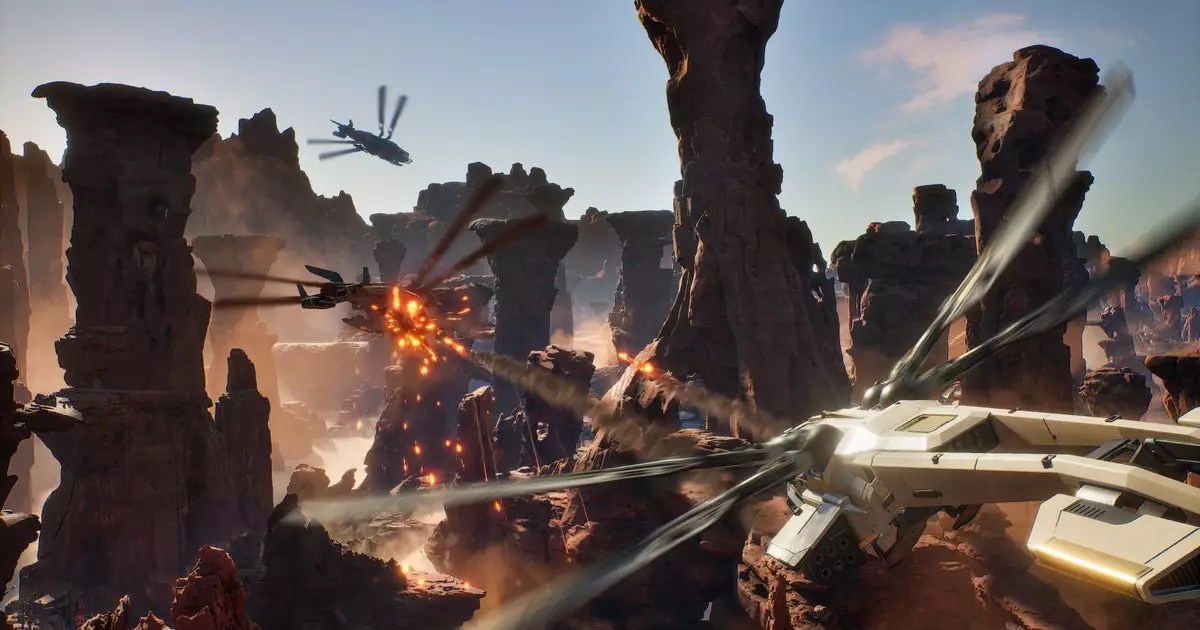The recent patch for Dune: Awakening signifies more than just minor bug fixes; it sets the stage for a transformative gaming experience. By introducing targeted tweaks, Funcom demonstrates a commitment to enhancing player agency and strategic depth. One of the most compelling changes is the refinement of ornithopter interactions. Previously, griefers could exploit the physics engine to crash or halt others’ vehicles easily. Now, with the implementation of impulse mechanics upon collision, Funcom effectively curbs this disruptive behavior. This not only preserves the integrity of multiplayer interactions but also elevates the flying experience to a more skill-based pursuit, where players’ mastery of the environment and vehicle control truly matters.
The decision to encourage players to dedicate their testing efforts toward specific issues—blood and water emissions, and ornithopter swarm behavior—reflects a strategic, focused approach to development. Although some may see this as a superficial directive, it reveals the devs’ understanding that player feedback in these areas will unlock the necessary insights to refine core mechanics. Offering free top-tier vehicles further underscores their commitment to transparent communication; it invites players to actively participate in shaping the game’s evolution, empowering the community rather than sidelining it.
Addressing Core Survival Mechanics: A Double-Edged Sword
One of the most anticipated improvements involves the introduction of a one-button system to deposit all water and blood into refineries, greatly simplifying resource management. This feature responds directly to player frustrations around busy micromanagement, allowing for more fluid gameplay and less tedious inventory juggling. However, the exclusion of blood from an analogous quick deposit mechanism signals the nature of these mechanics—resource management remains asymmetrical, perhaps intentionally so, to maintain some element of strategic constraint.
The temporary suspension of sandstorms and taxes during the initial week is a double-edged sword. While it ensures players are not caught off guard during testing, it also hints at the delicate balance between chaos and control in Dune’s universe. Sandstorms, as brutal natural hazards, loom large within the game’s ecosystem; temporarily turning them off may give players a taste of smoother operations but risks diminishing the sense of danger that makes survival meaningful. It is, ultimately, a calculated trade-off—prioritizing testing accuracy over persistent environmental brutality.
Shaping the Environmental and Combat Dynamics
The adjustments to sand fields and worms reflect a nuanced approach to environmental tension. Making the Hagga Basin’s spice and sand fields vulnerable to worm attacks significantly raises the stakes for resource gathering. Previously, players could exploit these zones without fear of worm predation, resulting in unbalanced farming opportunities. Now, with the worms made more lethal—vehicles or humans that collide with their bodies during animations risk destruction—the environment becomes a more perilous, believable aspect of Dune’s harsh reality.
This heightened danger promises to foster riskier, more strategic decisions. Expect players to reconsider their approaches to resource collection and combat since the environment itself becomes a dynamic adversary. Such design choices inject unpredictability into the game, emphasizing that survival is not guaranteed even in resource-rich areas.
Meanwhile, economic adjustments like reducing prices for spiced beverages and napalm subtly influence the in-game economy. By making these items more affordable, Funcom encourages players to experiment with offensive and defensive strategies that revolve around resource expenditure. This move hints at a broader game philosophy: that combat and survival are not merely about raw power but also about tactical resource management, especially in a universe as unforgiving as Dune’s.
Future Developments and Developer Engagement
The announcement of an upcoming patch scheduled for August 12 exemplifies how Funcom remains engaged with their community. Open communication about future changes fosters anticipation and trust. It reveals a developer team listening intently and willing to iterate further, demonstrating that Dune: Awakening’s evolution will be continuous and player-centric.
Through these measured, impactful interventions, Funcom is shaping a complex ecosystem that balances challenge, opportunity, and player influence. The game is moving toward a more refined, immersive experience where environmental hazards, resource management, and vehicle physics are no longer static but integral to a layered strategy. Whether these tweaks will fully realize the developers’ vision remains to be seen, but what is clear is their dedication to *craftsmanship*—aiming not merely to fix bugs but to craft a living, breathing reflection of the Dune universe that demands respect, skill, and ingenuity from its players.


Leave a Reply